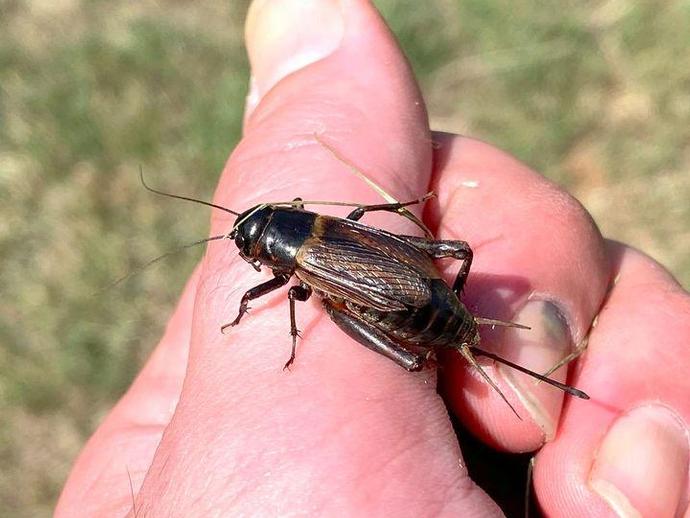October 26, 2021
Ben here with today's edition of #BenInNature presented by our friends at Carter Bank & Trust!
Field crickets like this little lady belong to the subfamily Gryllinae. Here in Virginia, we often associate field crickets with the late summer and early fall; however, they're actually around most of the year! The eggs hatch in the spring and the juvenile or "nymph" crickets grow rapidly, but they're most visible later in the season when they've molted multiple times and reached their full size.
Field crickets will eat just about anything, from plants to other insects (whether dead or alive). They can often be found feeding on grasshopper eggs or the pupae of butterflies, moths, and flies.
One of my favorite facts about field crickets is that you can get a rough estimate of the temperature by listening to their chirping! When you hear a cricket chirping, count the number of chirps in 15 seconds and then add 37. The sum will be the approximate temperature in Fahrenheit!
Crickets chirp for a variety of reasons (mostly to attract mates), but have you ever wondered how they chirp? Disappointingly, they do not have tiny violins. Instead, the male cricket (males are generally the only ones that chirp) rubs a sharp ridge on his wing called a "scraper" against the ridges on the opposite wing. It's a soothing sound on a nice fall evening; slightly less so when a field cricket finds its way into your home.
ABOUT #BenInNature
Social distancing can be difficult, but it presents a great opportunity to become reacquainted with nature. In this series of posts, Administrator of Science Ben Williams ventures outdoors to record a snapshot of the unique sights that can be found in the natural world. New updates are posted Monday - Friday, with previous posts highlighted on the weekends. This series of posts is made possible thanks to the support of VMNH Corporate Partner Carter Bank & Trust (www.cbtcares.com).
NATURE PHOTO IDENTIFICATIONS
If you discover something in nature that you would like help identifying, be sure to message us right here on Facebook with a picture (please include location and date of picture) and we'll have our experts help you identify it!

 Hours & Admissions
Hours & Admissions Directions
Directions

